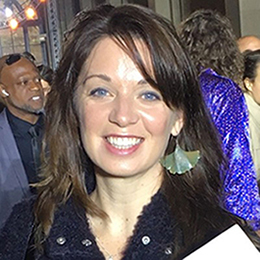Joanne Casey

Joanne is a podiatrist who has developed a portfolio career spanning clinical, research, education, management and leadership.
She has worked clinically within NHS primary, secondary, tertiary care teams and within independent practice settings. She has spent half of her 21year career working with the team in The Mike Edmonds Foot Clinic at Kings College Hospital, London and was laterally Professional development lead at the Royal College of Podiatry.
Joanne has a strong passion for community health, encouraging social prescribing and collaborative partnerships to provide individuals with personalised care to prevent tissue loss and limb amputation.
Joanne is currently a Senior Research Assistant within the University of Southampton’s long term conditions research group; Principle Podiatrist in private practice and Co-chair of the Legs Matter coalition.
Presentation at The Society of Tissue Viability 2023 Conference
WIFI – A common language in lower limb vascular assessment
Objectives
After attending this session, persons will be able to:
- Develop awareness of the WIFI tool and app
- Develop a common language in vascular assessment
- Understand risk stratification between the critical and chronically threatened limb
Abstract
Vascular assessment is an essential part of determining foot and lower limb health. Foot and leg ulceration can lead to limb, and ultimately life loss, if undiagnosed or untreated.
The burden of wounds study (Guest, 2019) highlights the necessity in prevention but also that of timely intervention in the prevention of limb loss. The WIFI tool identifies 3 core components, wound, ischemia and foot infection. It provides a common language between clinicians to be clear on the pathway between critical and chronic limb threatening disease.
This tool helps categorise and support clinical decision making to ensure safe and effective care. WIFI is a universal tool used in all lower limb assessment and looks to prevent variation in service provision. Both the National Wound Care Strategy and European Society of Vascular Surgery support the use of WIFI within its recommendations.
Presentions at The Society of Tissue Viability 2022 Conference
Managing the ‘at risk’ foot in patients with renal disease
Objectives
After attending this session, persons will be able to:
- Have refreshed their knowledge of the anatomy and physiology of the kidney
- Better understand CKD and implications of impaired kidney function on the foot
- Understand how research has shaped our understanding of CKD in the ‘at risk’ foot.
- Be aware of the implications of clinical practice
- Be able to offer further support to patients living with CKD
Abstract
Renal disease has in recent years been recognised as a major contributor to the poor health of the foot and lower limb. The kidney is an organ with some of the most complicated and intricate structures within the body which are responsible for cleansing the blood of toxins and transforming the waste into urine for excretion. There are usually no signs of chronic kidney disease (CKD) in the early stages and so diagnosis is often noted either by chance or when side effects become obvious. It can be a common condition which is often associated with getting older and as society finds itself with an aging population the associated pathological changes from the effects of renal disease, may begin to shape our healthcare services. In NICE guidance updated in 2016 within the foot risk stratification for those people living with diabetes, CKD 3A and above is a risk factor that could elevate a patient from moderate to high risk. This lift in risk status carries not only a more complex understanding of the foot and lower limb from an experienced health care professional but also more timely management and support to ensure best practice for patient care. Some of the first noted effects of CKD are within the lower limb and foot and this puts podiatric medicine as valuable resource not only in the diagnosis of CKD but also with the on-going management of complications that maybe seen within the lower limb.
How can we improve antimicrobial stewardship in wound care? Panel debate
Objectives
After attending this session, persons will be able to:
- Have a better understanding of the principles of AMS
- Recognise the importance of AMS within wound care
- Be able to identify the challenges in promoting AMS in practice
- Be able to recognise their role in AMS
- Have a greater understanding of how AMS can be conducted when caring for patients with infected wounds
Abstract
With the growing global problem of antimicrobial resistance, it is crucial that clinicians use antibiotics wisely, which largely means following the principles of Antimicrobial Stewardship (AMS). This is a multi-modal approach that includes infection prevention and the promotion of judicious use of antimicrobials to preserve their future effectiveness, while also improving the safety and quality of patient care (NICE, 2014; NICE 2015).
All open wounds will be colonised with bacteria, but antibiotic therapy is only required for those that are clinically infected. It is known that this guidance isn’t always followed, with some patients receiving multiple courses of antibiotics for wound infections that have been misdiagnosed.
In addition, topical antimicrobials are being increasingly used in wound care creating concerns of micro-organisms developing resistance to these therapies as well.
This panel discussion will explore some of the challenges in managing wounds at risk of infection and will provide delegates with a greater understanding of why AMS is important, who should be involved in AMS and what decisions/ action should be taken when caring for patients with infected wounds.














